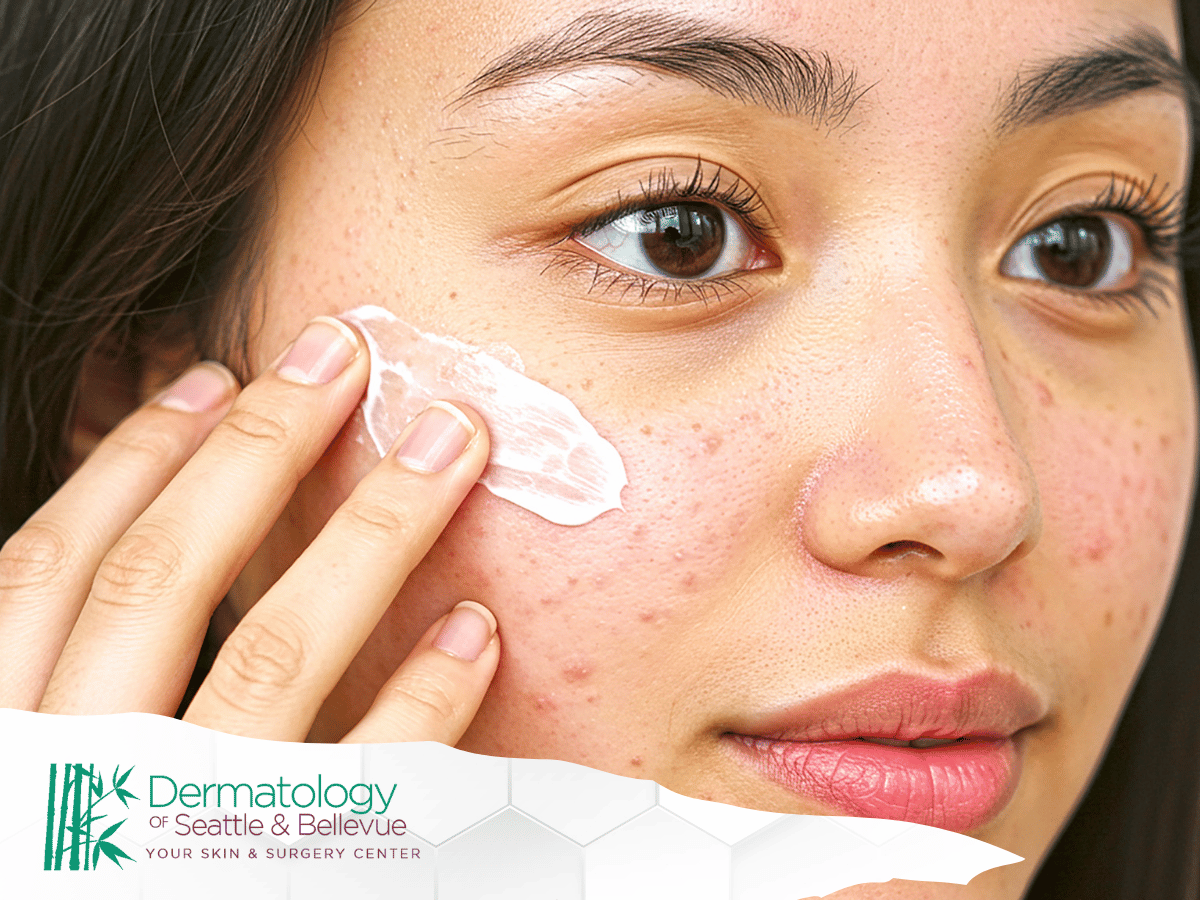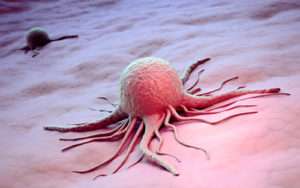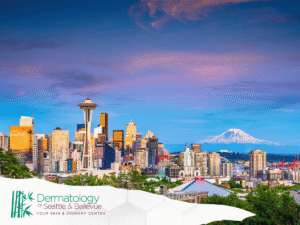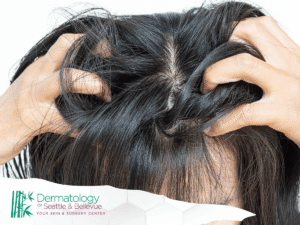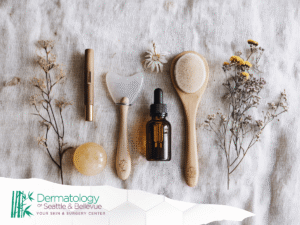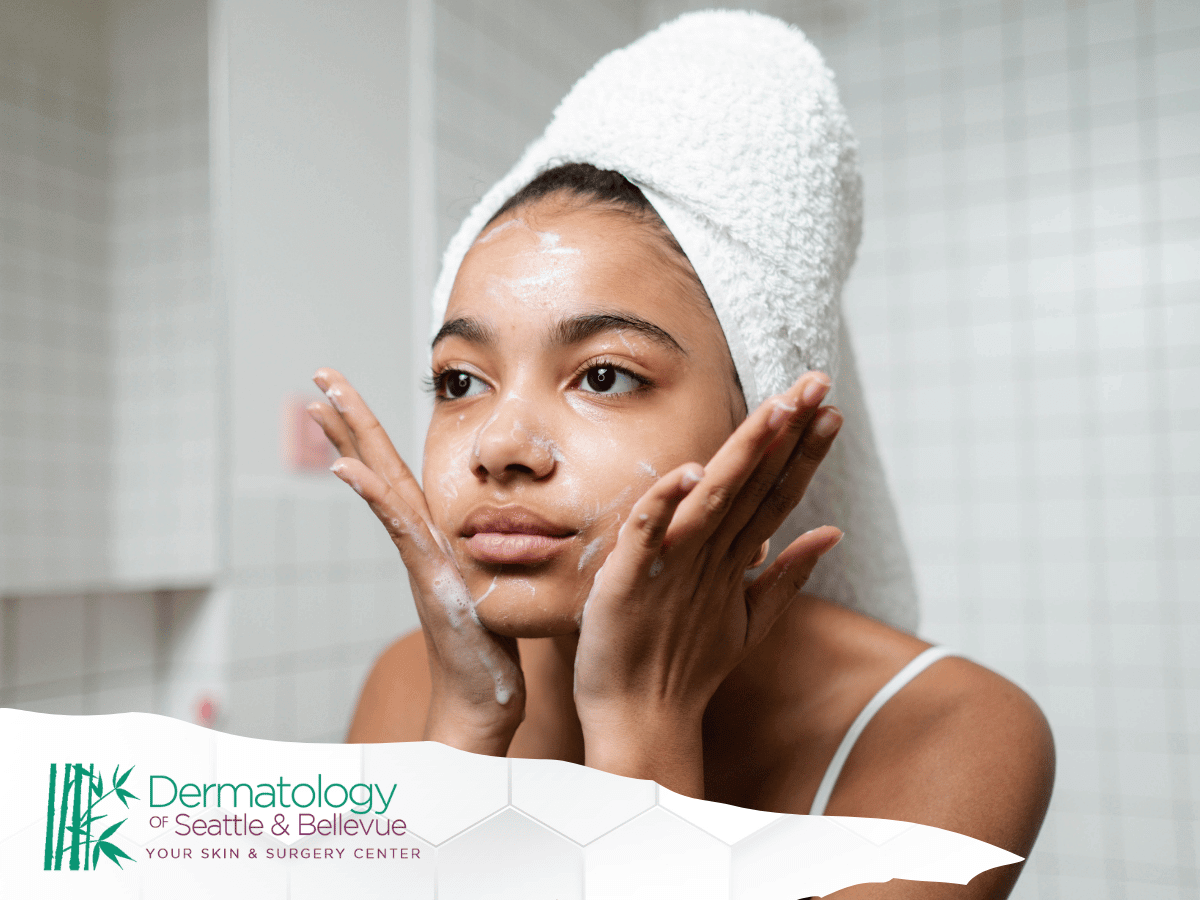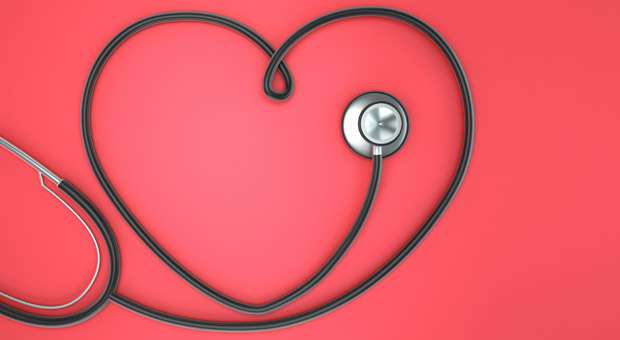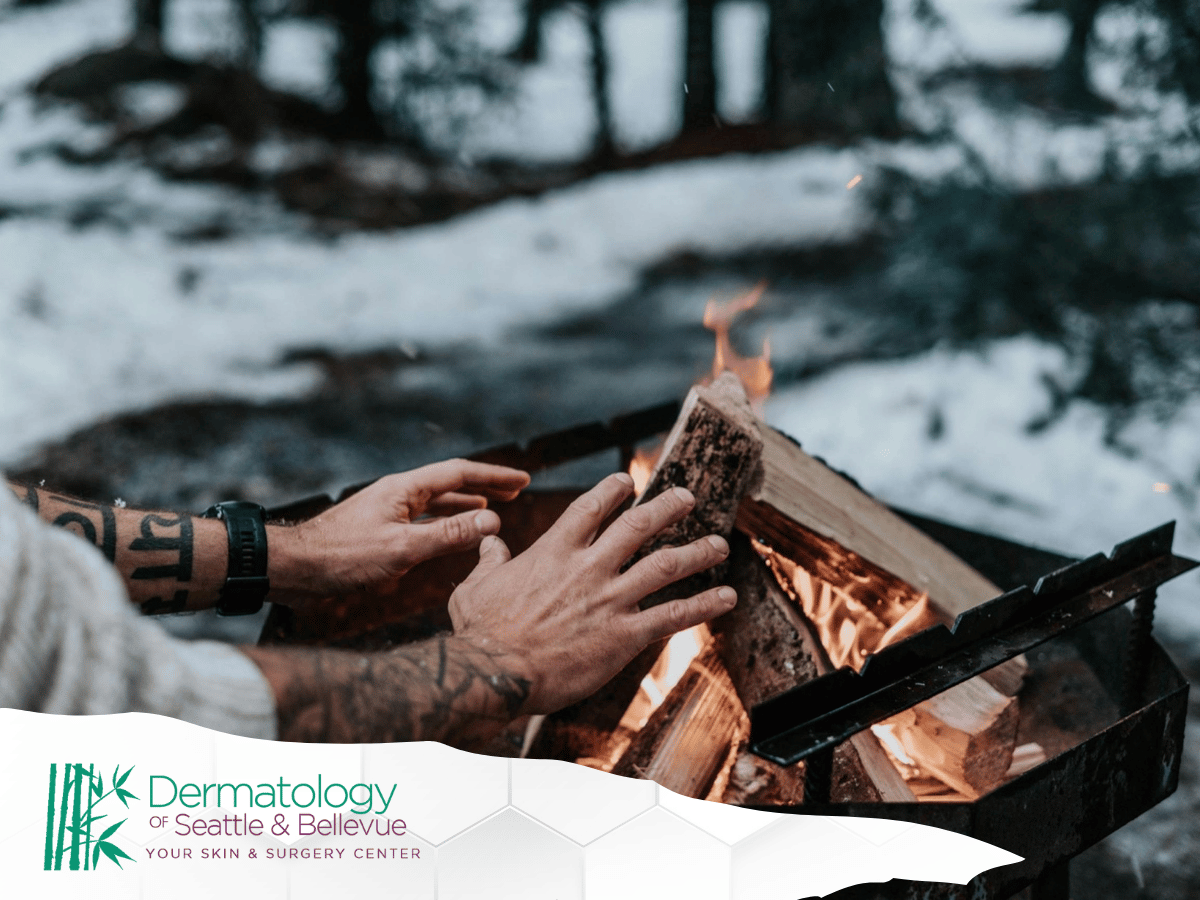Prescription vs OTC Acne Treatments When to Step Up Care
Dealing with acne can be frustrating, whether it’s a few occasional pimples or persistent breakouts. With a variety of treatment options available, it can be challenging to decide whether over-the-counter (OTC) remedies suffice or if it’s time to consider prescription options. In this article, we’ll explore the differences between prescription and OTC acne treatments, when to seek professional care, and tips for choosing the best acne products for clear skin.
Acne is a common skin condition that affects people of all ages. It occurs when hair follicles become clogged with oil and dead skin cells, leading to blackheads, whiteheads, pimples, or cysts. Factors contributing to acne include hormonal changes, diet, stress, and genetics. Understanding the root cause of your acne can help guide you in selecting the most effective treatment.
Hormonal Changes
Hormonal fluctuations, particularly during puberty, menstruation, pregnancy, and even stress, can significantly impact acne development. These changes increase oil production in the skin, creating an environment conducive to acne-causing bacteria. Identifying hormonal patterns can help tailor treatment strategies, such as considering hormonal therapies or specific topical treatments.
Dietary Influences
Dietary habits play a controversial but possible role in acne. Foods with a high glycemic index, dairy, and certain types of fats may exacerbate acne in some individuals. While diet is not a direct cause, maintaining a balanced diet rich in fruits, vegetables, and whole grains might aid overall skin health. Consulting a dermatologist or nutritionist can provide personalized dietary recommendations.
Stress and Lifestyle
Stress is a known trigger for acne flare-ups due to the body’s production of cortisol, which can increase oil production. Managing stress through activities like yoga, meditation, and regular exercise can help maintain clearer skin. Additionally, ensuring adequate sleep and hydration can support overall skin health, reducing the likelihood of breakouts.
Genetic Predispositions
Genetics can influence how your skin reacts to acne triggers, including oil production and skin cell turnover. If acne runs in your family, you might be more prone to developing it. Understanding your genetic background can help set realistic expectations for treatment outcomes and may guide the selection of more aggressive or tailored treatment options.
Over-the-Counter (OTC) Acne Treatments
OTC acne treatments are widely available and can be effective for mild to moderate acne. These products often contain active ingredients such as:
Benzoyl Peroxide
Benzoyl peroxide is a popular ingredient in acne products due to its ability to kill acne-causing bacteria and remove excess oil and dead skin cells. It’s available in various strengths, so start with a lower concentration to minimize irritation.
How It Works
Benzoyl peroxide works primarily by introducing oxygen into the skin’s pores, creating an inhospitable environment for bacteria. It also helps to peel away layers of dead skin, reducing the likelihood of clogged pores. Regular use can significantly diminish acne lesions over time.
Application Tips
To minimize irritation, apply benzoyl peroxide to clean, dry skin once a day, gradually increasing to twice daily if tolerated. It’s best to start with a lower concentration, such as 2.5%, and observe how your skin responds before moving to higher concentrations. Moisturizing after application can help reduce dryness and peeling.
Potential Side Effects
Common side effects include dryness, redness, and peeling, especially in the initial weeks of use. To combat these effects, consider using a gentle moisturizer and avoiding other drying agents like alcohol-based products. If severe irritation occurs, reduce usage frequency or consult a dermatologist.
Salicylic Acid
Salicylic acid is a beta hydroxy acid that helps exfoliate the skin and unclog pores. It’s an effective option for treating blackheads and whiteheads.
Mechanism of Action
Salicylic acid penetrates the skin’s surface to dissolve the buildup of dead skin cells within pores, preventing blockages that can lead to acne. Its anti-inflammatory properties also soothe irritated skin, reducing redness and swelling.
Integrating into Skincare
For optimal results, use salicylic acid-based products, such as cleansers or spot treatments, once or twice daily. Combining with a gentle cleanser and moisturizer can enhance its effectiveness while maintaining skin balance. Avoid using with harsh exfoliants to prevent over-drying.
Considerations and Sensitivities
While effective, salicylic acid can cause dryness and irritation, particularly for those with sensitive skin. Patch testing before full-face application is recommended to gauge skin tolerance. If irritation persists, reduce usage or seek alternatives.
Alpha Hydroxy Acids (AHAs)
AHAs, such as glycolic acid and lactic acid, help remove dead skin cells and promote cell turnover. They are often used in skin treatments to improve skin texture and reduce acne scars.
Benefits Beyond Acne
AHAs are not only beneficial for acne but also for improving overall skin texture and tone. They promote collagen production, which can help reduce fine lines and improve skin elasticity. Regular use can lead to smoother, more radiant skin.
Incorporating AHAs
Start with a low concentration (around 5-10%) to assess skin tolerance. AHAs are often found in serums and masks, which can be used 1-3 times per week depending on your skin’s sensitivity. Always follow with sunscreen, as AHAs can increase sun sensitivity.
Potential Drawbacks
While AHAs are generally well-tolerated, overuse can lead to irritation, redness, and increased sun sensitivity. It’s crucial to balance AHA use with gentle skincare practices and sun protection to maintain skin health and prevent damage.
Sulfur
Sulfur helps dry out the surface of the skin to absorb excess oil. It’s often combined with other ingredients to enhance its effectiveness.
Unique Properties
Sulfur has natural antibacterial properties, making it effective in reducing acne-causing bacteria on the skin. It also helps exfoliate dead skin cells, clearing clogged pores and reducing inflammation.
Application Advice
Sulfur is commonly found in masks, cleansers, and spot treatments. For best results, use sulfur-based products a few times a week, allowing it to sit on the skin for a set time before rinsing. Combining with a moisturizer can prevent excessive dryness.
Side Effects and Sensitivities
Some individuals may find sulfur’s distinctive odor unpleasant, though it’s usually not a lasting concern. As with other acne treatments, sulfur can cause dryness and peeling, so it’s important to monitor your skin’s response and adjust usage accordingly.
Prescription Acne Treatments
When OTC treatments aren’t enough, it may be time to consult a dermatologist for prescription options. Prescription acne treatments are typically stronger and can target more severe forms of acne. Common prescription treatments include:
Topical Retinoids
Retinoids, derived from vitamin A, help unclog pores and reduce inflammation. They can also improve skin texture and reduce acne scars.
How Retinoids Work
Retinoids function by increasing cell turnover, helping to prevent the clogging of pores. They also reduce oil production and have anti-inflammatory properties, making them highly effective against various types of acne.
Usage Guidelines
Introduce retinoids gradually to minimize irritation, starting with a small amount every other night. Over time, increase usage as tolerated. It’s essential to use sunscreen daily, as retinoids can increase skin sensitivity to the sun.
Managing Side Effects
Common side effects include dryness, redness, and peeling, especially during the initial weeks of treatment. Using a gentle, hydrating moisturizer can alleviate these symptoms. If irritation persists, consult your dermatologist for guidance.
Oral Antibiotics
For moderate to severe acne, oral antibiotics can help reduce bacteria and inflammation. They are usually prescribed for a short period to avoid antibiotic resistance.
Mechanism and Effectiveness
Oral antibiotics work by targeting the bacteria responsible for acne and reducing inflammation. They are often used in combination with topical treatments to enhance results and are effective for inflammatory acne.
Treatment Duration
Typically prescribed for 3-6 months, oral antibiotics are not a long-term solution but can provide significant improvements during treatment. It’s important to follow your dermatologist’s instructions to avoid developing antibiotic resistance.
Potential Side Effects
Some individuals may experience side effects such as stomach upset, increased sun sensitivity, or yeast infections. If side effects occur, discuss with your dermatologist, who may adjust the dosage or switch medications.
Hormonal Treatments
Hormonal treatments, such as birth control pills or spironolactone, can be effective for women with hormonal acne. These medications help regulate hormones and reduce oil production.
Understanding Hormonal Acne
Hormonal acne is often characterized by flare-ups coinciding with hormonal changes, such as the menstrual cycle. These treatments work by balancing hormone levels and reducing oil production, leading to fewer breakouts.
Treatment Options
Birth control pills regulate estrogen and progesterone levels, helping to stabilize hormone fluctuations. Spironolactone, an androgen blocker, reduces oil production and is effective for those with hormonally-driven acne.
Considerations and Monitoring
Regular monitoring by a healthcare provider is necessary to assess the effectiveness and manage potential side effects. Not all hormonal treatments are suitable for everyone, so a personalized approach is essential.
Isotretinoin
Isotretinoin is a powerful oral medication used for severe acne that hasn’t responded to other treatments. It works by reducing oil production and shrinking oil glands.
Potency and Effectiveness
Isotretinoin is highly effective, often resulting in long-term remission of acne. It addresses all four major causes of acne: excess oil production, clogged pores, bacteria, and inflammation.
Treatment Protocol
Typically taken over a 4-6 month course, isotretinoin requires regular monitoring by a dermatologist, including blood tests to check for potential side effects. Strict adherence to dosage and medical guidance is crucial for safety.
Side Effects and Precautions
Common side effects include dry skin, lips, and eyes, as well as increased sun sensitivity. Due to its potential for severe side effects, including birth defects, isotretinoin is prescribed under strict guidelines, often requiring participation in a risk management program.
When to Step Up Care
Knowing when to transition from OTC to prescription acne treatments can be crucial for achieving clear skin. Consider stepping up your care if:
- Your acne is severe or cystic
- OTC treatments haven’t worked after several weeks
- Your acne is causing significant scarring
- You experience emotional distress due to your acne
Assessing Acne Severity
Understanding the severity of your acne is the first step in deciding whether to seek prescription treatments. Severe acne often presents as deep, painful cysts or extensive areas of inflammation and requires more intensive treatment.
Duration of OTC Treatment
If you’ve been using OTC treatments consistently for several weeks without improvement, it may be time to consult a dermatologist. They can assess whether prescription treatments could provide better results or if additional factors, such as lifestyle changes, might be necessary.
Impact on Daily Life
Acne can significantly impact self-esteem and emotional well-being. If acne causes distress or affects your quality of life, seeking professional treatment can provide both physical relief and emotional support.
Importance of Professional Guidance
A dermatologist can offer personalized advice, ensuring that you use the most effective treatments for your specific skin type and acne severity. They can also monitor treatment progress and make necessary adjustments for optimal outcomes.
Best Acne Scar Removal Treatments
by Evans Exodo (https://unsplash.com/@soyevansexodo)
Acne scars can be a frustrating aftermath of breakouts. Fortunately, several treatments can help minimize their appearance:
Chemical Peels
Chemical peels use acids to remove the outer layer of skin, promoting new skin growth and reducing the appearance of scars.
Types of Chemical Peels
Chemical peels range from superficial to deep, with varying strengths and recovery times. Superficial peels use mild acids like glycolic acid, while deeper peels use stronger acids like phenol. Choosing the right peel depends on skin type and scar severity.
Procedure and Recovery
During the procedure, an acid solution is applied to the skin, causing it to exfoliate and eventually peel off. Recovery times vary, with superficial peels requiring minimal downtime and deeper peels needing several weeks. Post-care involves avoiding sun exposure and using gentle skincare products.
Expected Outcomes
Chemical peels can significantly improve skin texture and tone, reducing the appearance of mild to moderate acne scars. Multiple sessions may be necessary for optimal results, and maintenance treatments can prolong benefits.
Microneedling
Microneedling involves using fine needles to create tiny punctures in the skin, stimulating collagen production and improving scar texture.
How Microneedling Works
The controlled micro-injuries induce the body’s natural wound-healing process, boosting collagen and elastin production. This leads to firmer, smoother skin and a reduction in scar depth over time.
Treatment Sessions
Microneedling is usually performed in multiple sessions, spaced several weeks apart. The number of sessions needed depends on the severity of scarring and the individual’s skin response. Results are gradual, with improvements continuing for months after treatment.
Combining with Other Treatments
Combining microneedling with topical serums or platelet-rich plasma (PRP) can enhance results. Consulting with a skincare professional can help determine the best approach for your skin type and scarring.
Laser Therapy
Laser therapy targets the deeper layers of the skin to reduce scar tissue and promote new skin growth. It can be effective for both acne scars and overall skin rejuvenation.
Types of Laser Treatments
Laser treatments vary, with options like ablative lasers, which remove the outer skin layers, and non-ablative lasers, which stimulate collagen production without damaging the surface. Fractional lasers offer a middle ground, targeting specific skin areas while leaving surrounding tissue intact.
Treatment Process
Laser therapy involves directing concentrated light beams at scarred areas, breaking down scar tissue and encouraging new cell growth. Treatment sessions are typically spaced weeks apart, with results becoming more noticeable over time.
Considerations and Side Effects
Post-treatment care is crucial, as laser therapy can cause redness, swelling, and temporary changes in skin pigmentation. Following a dermatologist’s aftercare instructions can minimize side effects and enhance results.
Dermal Fillers
Dermal fillers can be injected into depressed acne scars to raise them to the level of surrounding skin, creating a smoother appearance.
Types of Fillers
Common fillers include hyaluronic acid, poly-L-lactic acid, and calcium hydroxylapatite, each offering different levels of lifting and longevity. The choice of filler depends on scar type and desired results.
Procedure and Results
Filler injections are relatively quick, with minimal downtime. Results are immediate, with full effects visible after any initial swelling subsides. Fillers typically last several months to over a year, depending on the type used.
Maintenance and Combination Treatments
Regular maintenance injections are needed to sustain results. Combining fillers with other scar treatments, like laser therapy or microneedling, can further enhance skin texture and appearance.
Canine Acne Treatments
While acne is commonly associated with humans, dogs can also suffer from this condition. Canine acne typically appears as small bumps or pustules around the muzzle and lips. Treatment options include:
- Regular cleaning of the affected area
- Topical antibacterial products
- Oral antibiotics for severe cases
Recognizing Canine Acne
Canine acne often presents as red bumps or pustules, primarily around the dog’s muzzle, lips, and sometimes the chin. Understanding the difference between acne and other skin conditions is crucial for proper treatment.
Home Care and Prevention
Regularly cleaning your dog’s face with a gentle, non-irritating cleanser can prevent dirt and bacteria buildup. Using stainless steel or ceramic food bowls can also reduce the risk of acne by minimizing bacterial exposure from plastic bowls.
Veterinary Intervention
If home care doesn’t improve the condition, or if the acne seems painful or severe, consulting a veterinarian is essential. They can prescribe topical or oral medications and provide advice on preventing future outbreaks.
Conclusion
Choosing between OTC and prescription acne treatments depends on the severity of your acne and how well your skin responds to initial treatments. While OTC options are effective for many, prescription treatments offer stronger solutions for stubborn acne. Additionally, addressing acne scars and canine acne requires specialized approaches. By understanding your skin’s needs and seeking professional advice when necessary, you can take control of your acne and achieve clear, healthy skin.

